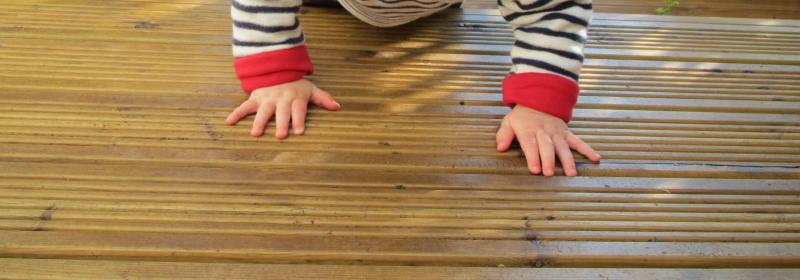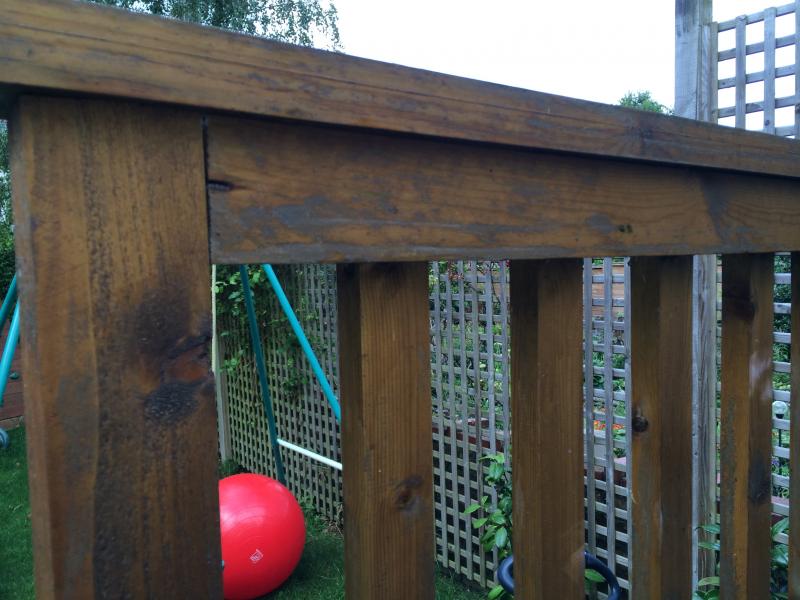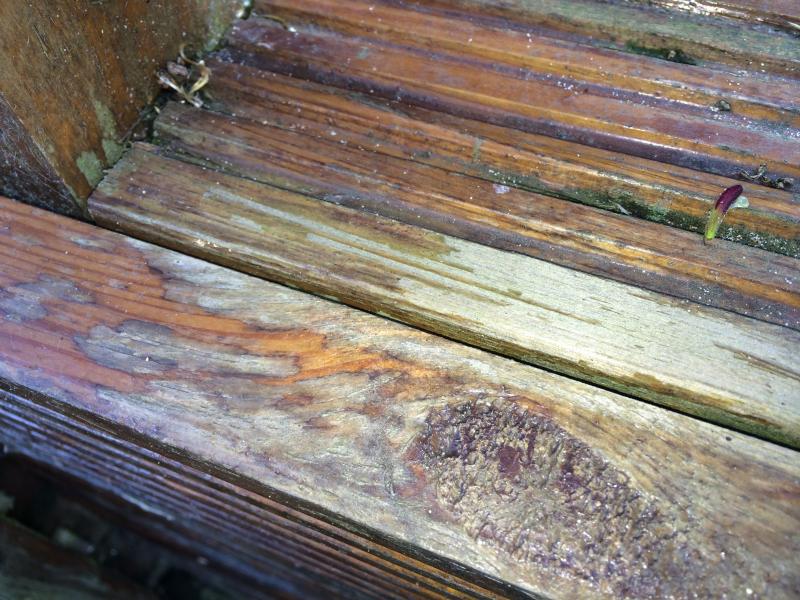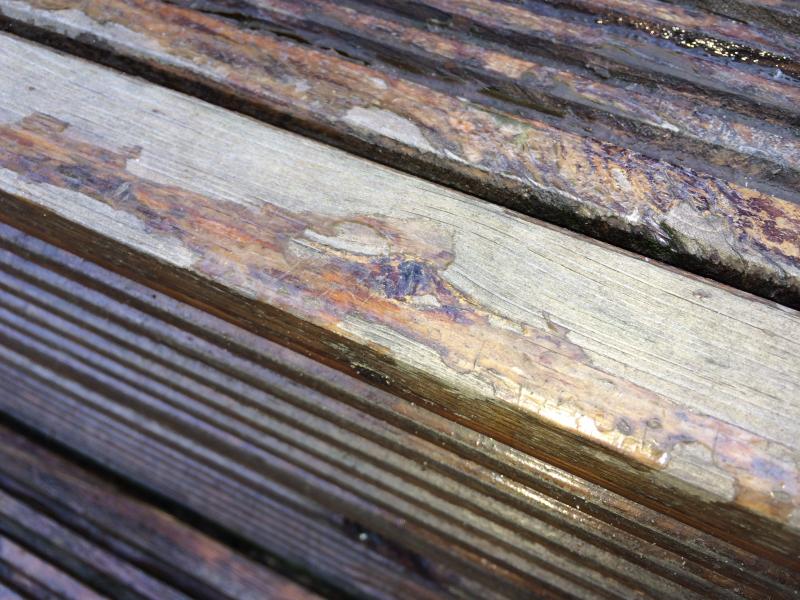Hello All 
I want to revive my deck to make it look like new, especially as I'm getting one part of it re-built from scratch.
Here is how it went:
I used Liberon Decking Oil to get this wonderful finish on my deck:
I had applied the two coats within 20 minutes of each other, as instructed, but it was a hot day and I think the first coat had dried or maybe I used too much oil in places...
After just 1 year spots started appearing like this:
But even if I'd re-oiled every year, I would have been in this same predicament:
- If you oil over those spots, the oil just preserves the grey spots in their grey colour.
- If you oil over the oil which has survived, it makes it a bit darker.
So by re-oiling you dont get that great colour back, nor do you get consistency. You get a camouflage effect.
So why bother re-oiling as it isn't improving the appearance?
So this year (4 years later) I tried again to revive it. I scrubbed and cleaned a test area with decking cleaner, then re-oiled.
The final result doesn't look much different:
I'd love to get the deck back to that original photo. Or perhaps some kind of stain. But I'd need a way or removing all the oil first, and it's a large deck and hand scrubbing it could take a long time!
I want to revive my deck to make it look like new, especially as I'm getting one part of it re-built from scratch.
Here is how it went:
I used Liberon Decking Oil to get this wonderful finish on my deck:
I had applied the two coats within 20 minutes of each other, as instructed, but it was a hot day and I think the first coat had dried or maybe I used too much oil in places...
After just 1 year spots started appearing like this:
But even if I'd re-oiled every year, I would have been in this same predicament:
- If you oil over those spots, the oil just preserves the grey spots in their grey colour.
- If you oil over the oil which has survived, it makes it a bit darker.
So by re-oiling you dont get that great colour back, nor do you get consistency. You get a camouflage effect.
So why bother re-oiling as it isn't improving the appearance?
So this year (4 years later) I tried again to revive it. I scrubbed and cleaned a test area with decking cleaner, then re-oiled.
The final result doesn't look much different:
I'd love to get the deck back to that original photo. Or perhaps some kind of stain. But I'd need a way or removing all the oil first, and it's a large deck and hand scrubbing it could take a long time!






